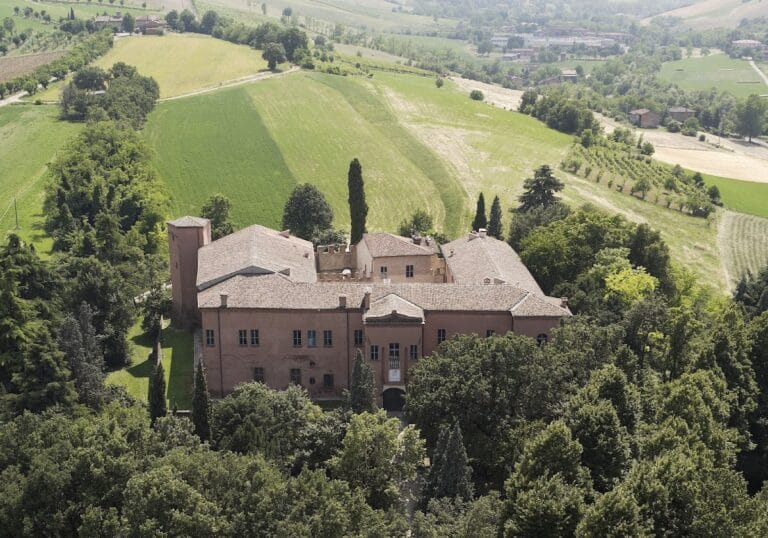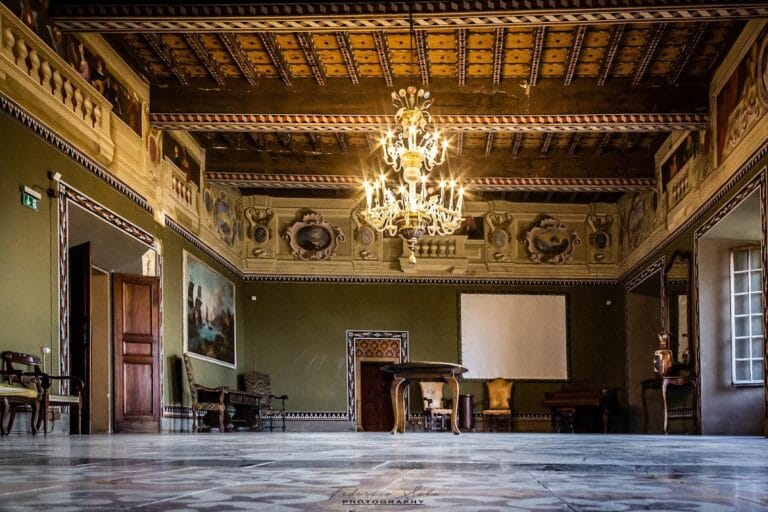Rocca dei Boiardo: A Historic Fortress in Scandiano, Italy
Visitor Information
Google Rating: 4.4
Popularity: Low
Google Maps: View on Google Maps
Country: Italy
Civilization: Medieval European
Remains: Military
History
The Rocca dei Boiardo is a historic fortress situated in the town of Scandiano, Italy. Its origins date back to the 12th century, when the Da Fogliano family began its construction as a defensive stronghold. The earliest core of the fortress, explicitly erected for protection, was completed in 1315, marking the Rocca’s foundational military function.
From 1423 to 1560, the Boiardo family took residence in the Rocca, giving the fortress its current name. During their tenure, the building evolved from a purely military fortress into a residential palace. This period saw the decoration of the walls with frescoes illustrating scenes from the Aeneid, created by the artist Nicolò dell’Abbate, who was associated with the Bolognese school of painting. In 1772, these frescoes were removed and transferred to the Palazzo Ducale in Modena. Following a fire at that location, the artworks were subsequently relocated to the Galleria Estense.
Later ownership passed to the Thiene family, who engaged architect Giovanni Battista Aleotti to undertake major renovations. Aleotti completed the west tower, designed an impressive staircase leading to the upper floors, and refreshed the south façade, largely defining the fortress’s present-day appearance.
Following the Thiene, the fortress was controlled by the Bentivoglio family and then by the Este family of Scandiano, a branch of the broader Este lineage. The Estes introduced Baroque stylistic elements to the decoration. After a period of decline, the fortress was owned by Marquis De Mari between 1740 and 1777 before returning once more into the hands of the Este family.
During the upheavals of the French Revolution, the fortress became state property and was sold to a private individual named Paolo Braglia. After the Restoration of the old regimes, the Este family reclaimed the Rocca, using it as a summer residence frequented by cadets from the Modena Military Academy.
By the 20th century, the structure suffered gradual neglect until a restoration campaign began in 1983, led by the Emilia-Romagna authority responsible for architectural heritage. In 2007, administration of the fortress was transferred to the local municipality for a period of fifty years. In 2011, the Rocca found a new role as the home of a regional wine repository, promoting wines such as the Spergola of Scandiano and other Emilia-Romagna varieties.
Remains
The Rocca dei Boiardo exhibits a complex layout that reflects centuries of architectural evolution. Originally, the fortress was encircled by a defensive wall and protected by a moat crossed via a drawbridge. It was guarded by two watchtowers; however, one of these towers was left unfinished. The west tower, part of the defensive structure, was completed during the renovations commissioned by Giovanni Battista Aleotti.
Within the fortress, the courtyard presents walls that were once adorned with frescoes portraying magical episodes from a poem by the Boiardo family. These artworks included large figures and shields emblazoned with the coats of arms of families allied by blood to the Boiardos. Early 19th-century sketches and descriptions by Giovanni Battista Venturi document these decorations in detail.
The courtyard’s architecture reveals layers of artistic intervention over the centuries. A column on the south wall preserves a medieval “water-leaf” capital, which likely dates to the 15th or 16th century and belonged to the original portico of that period. Additionally, fragments of frescoes dating from the 16th century remain visible on the west wall.
On the ground floor, the “Appartamento Estense” contains the most richly decorated rooms inside the Rocca. These spaces have been the focus of recent restoration efforts, enhancing their historical features while preserving delicate decorative elements.
Aleotti’s influence is especially evident in three key architectural elements: the completion of the west tower, the grand staircase that provides access to the upper floors, and the extensive renovation of the south façade. These modifications shaped much of the fortress’s current appearance.
After years of neglect, restoration initiated in the early 1980s aimed to protect both structural and decorative aspects of the fortress. Today, the Rocca is part of the Associazione dei Castelli del Ducato di Parma, Piacenza e Pontremoli, a network linking regional castles and fortifications, highlighting its importance within the local heritage landscape.










